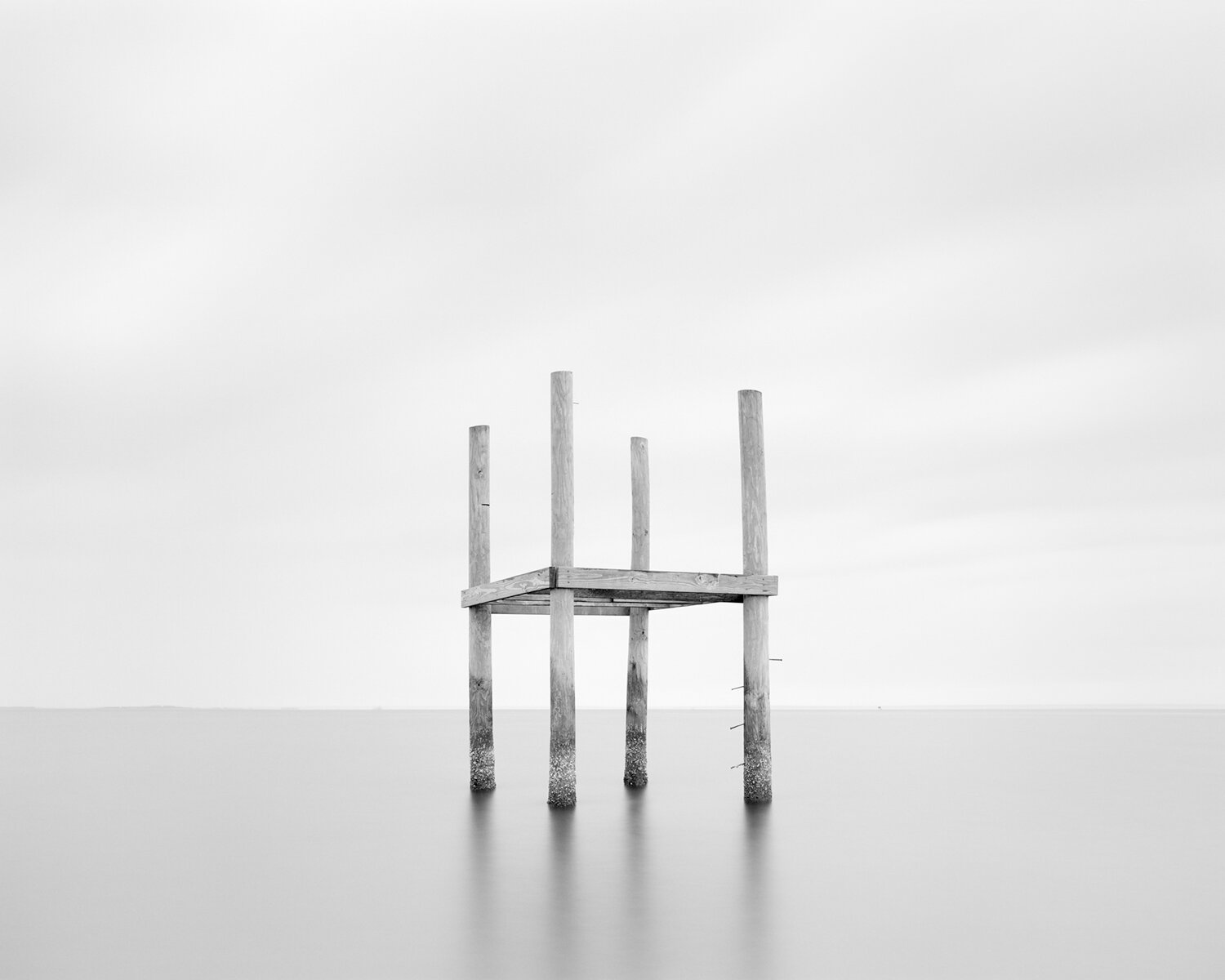Interview transcript below:
How did you get your start in photography?
I’ve always been very mechanically inclined, and love to ponder how things work. From a young age, I was intrigued by cameras and the film they used to record images. My senior year in high school, when I had to make the decision as to what I was going to do with my life, I elected to take a photography class, and once I witnessed the magic of my first black and white print emerging beneath the soft red glow of the darkroom’s safelight, I was hooked.
Once I got into it, I saw the camera as a tool. It could see things in ways I couldn’t with my own eyes, because of what is possible through optics; both wide-angle and telephoto. Between the detail extracted from a scene to the effects of different lenses, it all became a creative method with almost unlimited combinations to create what I prefer to consider to be balanced, visual equations.
What is your process and what tools do you use to capture your unique landscapes?
Over my career, I’ve photographed pretty much everything you can photograph, from commercial campaigns for huge corporations with personalities like Michael Phelps to editorial work of people snowboarding down volcanoes in Japan. Taking my black and white fine art work into consideration, my creative sides are polar opposites. On one hand, for advertising work, I’m working with the highest-end medium format digital cameras, with all sorts of chaos happening on the set of a shoot. On the other, it’s just me, a box camera, and a few sheets of film, chasing this photograph that I’ve constructed in my mind, and am quietly trying to assemble in the camera.
When I’m out in the field working, I am focused on every nuance in each scene and composition, and never press the shutter button unless I’m completely confident that I’ve achieved what I’m after. I’ve set up the camera hundreds of times, and worked as diligently as possible to try to achieve what I’d consider a perfect composition, and for one reason or another, have failed to do so. Some photographs just aren’t meant to be. But, that image I’m chasing stays in my mind, almost haunting me, until I can eventually successfully create it.
What memorable responses have you had to your work?
I think that like most creatives would say, the ultimate flattery is in having someone falling in love with something you created, and inviting it into their element. I recently had a collector looking for the perfect piece for above their bed for nearly two decades, and in an instant, fell in love with one of my photographs, and brought it into their lives. Art isn’t a necessity; it’s not bread or milk, but when you observe someone whom is just completely captivated by something you meticulously created, it is the ultimate reward. Every little detail, every step you slogged through a swamp, every frozen night sleeping on the ground, every bit of yourself where you could’ve given up, and called it “good enough”, but you wouldn’t stop until you were satisfied, and what you created that moment is speaking to someone’s soul…that’s what it’s all about.
What message do you hope to convey to the viewer with your art?
I want the viewer to feel a fond familiarity with the scenes I photograph, but also question its location, due to the ambiguity I introduce into my scenes. I prefer not to lose the viewer in the mundane details of recognition of place, but for the viewer to get lost in the space I’ve provided.
Stylistically, I don’t think my work fits into any specific genre. I don’t consider myself a landscape photographer, because I don’t take images of moments in time at specific places. In fact, I do everything I can to remove the sense of place, and often times, even omit the sense of dimension from my work. I prefer working in flat light, and choosing scenes and subjects that I can work into a two-dimensional rectangle as design elements. I’d say that above all, design is what moves me to pressing the shutter.
What is your favorite and least favorite color?
I guess I’d have to say my favorite color is brown. Different shades of brown translate into gorgeous tones on black and white film, and the best brown tones come in the winter, which is my favorite time to make photographs. Greens, on the other hand, generally yield a heavy, almost lifeless look.
What is your favorite tool?
While I started my photography career with film, I made the transition to digital along with most of the rest of the world in the early 2000’s. The immediate reward of digital imaging was definitely handy in many ways, but I began to feel a disconnect from my work. In 2009, I bought a large format camera to slow down my creative process. I had loved working with these cameras and big sheets of film in college, so I was really excited about incorporating both into my personal work.
If you’re unfamiliar with the view camera, it’s what Ansel Adams (and most photographers from the inception of photography until the first half of the 1900’s) worked with. There are literally zero electronics. No autofocus, no meter, the image is viewed upside down on the back of the camera, and it’s pretty much impossible to use one without a tripod. To work with a view camera is to be deliberate in your approach. You don’t just go post-holing through fields of poppies, snapping off hundreds of photos, which you’ll select (and Photoshop) the best of later on. With film, you have to slow down…and smell those poppies! But, you can do things with film that would be otherwise impossible to accomplish digitally. I prefer to function in that realm.
What part of art do you love / hate?
I’d have to say that my least favorite thing is marketing, because although marketing is an art, I feel it’s so anti-art, and is very misleading. As with any other art, like, say, music, you have to wonder how many incredible songs and musicians you’d miss out on if you only listened to radio stations. Most of those bands are marketed big time, and they become household hames because of that marketing, and listeners ask to listen to them, because they feel familiar. It doesn’t necessarily mean that this hot new band makes skillful, soulful, or meaningful music…it’s just what ears are used to hearing. I think the same goes for visual arts, especially photography. Instead of the artists with cohesive, deep bodies of compelling work, it’s often those who are making cliché pieces, but are great at marketing that are getting a lot of the market share.
My favorite aspect is tackling challenges. I’m not the type of photographer who hits up the hot spots and nabs a shot of what the scenic overlook looked like that day. I prefer to take it as far as I can, hike further, wade deeper into the water, and just try to turn over different stones than everyone else. When I do find a cool treasure, I like to tell my own unique story of it.
If you could see your artwork displayed in any venue in the world where would that be and why?
I’ve been (no pun intended) developing a new body of work that is environmentally-focused, using photographic processes that I’ve had to concept, create, and evolve. The approach is completely unique, and pushes the envelope of what photography has been capable of capturing.
While this may not be a specific answer to your question, I’ve been working on teaming up with scientists to apply this technique I’ve developed to apply my work alongside their environmental studies in a manner which delivers a more contemplative message than as literal of a look into natural processes as photography has traditionally taken. Put simply, I’d love for my work to help people understand environmental issues in a more contemplative manner.



















